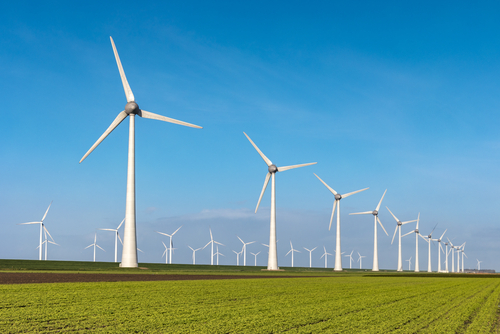Report: Global wind industry installed record 117 GW of new capacity in 2023

Despite a cited need for policy actions and turbulent macroeconomic developments, the Global Wind Energy Council’s (GWEC) recent Global Wind Report found that 2023 was a banner year for its particular brand of renewable energy worldwide, with 117 GW of new capacity installed.
At that level, wind installations experienced a 50 percent year-on-year increase over 2022, with 54 countries deploying new wind power. As a result of this and new national industrial policies in major economies, GWEC revised its 2024-2030 growth forecast to an increase of 10 percent. This was backed by the 2023 United Nations Climate Change Conference (COP28) adoption of a 2030 target for triple the current renewable energy figures.
Despite the tailwinds, both the report and Ben Backwell, CEO of GWEC, made it clear that storm clouds lurk on the horizon.
“Growth is highly concentrated in a few big countries like China, the U.S., Brazil and Germany, and we need many more countries to remove barriers and improve market frameworks to scale up wind installations,” Backwell said. “Geopolitical instability may continue for some time. But as a key energy transition technology, the wind industry needs policymakers to be laser-focused on addressing growth challenges such as planning bottlenecks, grid queues and poorly designed auctions. These are the measures that will significantly ramp up project pipelines and delivery, rather than reverting to restrictive trade measures and hostile forms of competition.”
In order to meet the COP28 target for 2030, the wind industry would need to triple 2023’s annual growth, achieving at least 320 GW by 2030. If net zero has any chance of succeeding, the report concluded, only an open door and cooperative-based trade scenario could make it happen. Barriers, economic downturns and escalation of global hostilities could doom any chance remaining.
Several industry figures responded positively to the report’s comprehensive view of the sector, including Girish Tanti, vice president of the Indian multinational Suzlon Energy Limited, who saw the report as validation and call to arms alike.
“I cannot stress this enough: We cannot prevent a climate crisis in isolation,” Tanti said. “The Global North, which has largely shouldered the green energy revolution so far, requires the Global South’s support and potential in cost-efficient technology and supply chain to capitalise on renewable energy’s true potential. Renewable energy is the equaliser that our fragmented world needs right now as it can decentralise power generation, secure millions of new jobs, and meet the basic necessities of clean air and good health for all.”
That view was backed by GWEC and Backwell, who said that enhanced global collaboration is key to fostering the environments and tools needed to get wind and renewable energy growth to where it can meet a 1.5 degree Celsius pathway.
